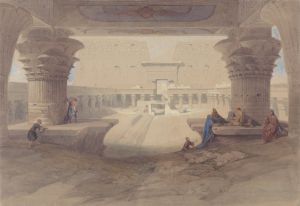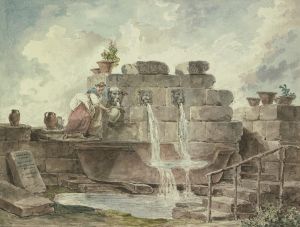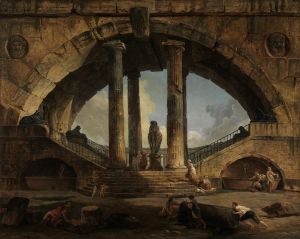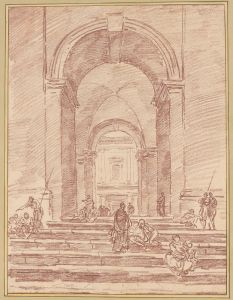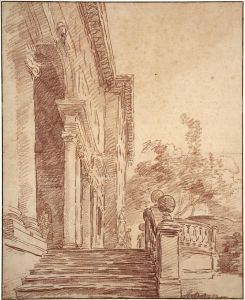
Roman triumphal arch
A hand-painted replica of Hubert Robert’s masterpiece Roman triumphal arch, meticulously crafted by professional artists to capture the true essence of the original. Each piece is created with museum-quality canvas and rare mineral pigments, carefully painted by experienced artists with delicate brushstrokes and rich, layered colors to perfectly recreate the texture of the original artwork. Unlike machine-printed reproductions, this hand-painted version brings the painting to life, infused with the artist’s emotions and skill in every stroke. Whether for personal collection or home decoration, it instantly elevates the artistic atmosphere of any space.
Hubert Robert, a prominent French painter known for his landscapes and architectural scenes, created the artwork titled "Roman Triumphal Arch." Born in 1733, Robert became a significant figure in the art world during the 18th century, particularly recognized for his ability to blend classical architecture with imaginative elements. His works often depicted ruins and grand structures, reflecting the fascination with antiquity that was prevalent during his time.
The painting "Roman Triumphal Arch" exemplifies Robert's skill in capturing the grandeur and decay of ancient Roman architecture. While specific details about this particular painting are limited, it is consistent with Robert's broader oeuvre, which frequently featured Roman themes. His works often included elements such as arches, columns, and other architectural features that were characteristic of Roman engineering and design.
Robert's interest in Roman architecture was likely influenced by his time in Italy, where he studied from 1754 to 1765. During his stay, he was exposed to the ruins of ancient Rome, which left a lasting impression on his artistic style. This period in Italy was crucial for Robert, as it allowed him to immerse himself in the study of classical art and architecture, which became central themes in his work.
In "Roman Triumphal Arch," Robert would have employed his typical approach of combining real and imagined elements. His paintings often depicted ruins in a state of picturesque decay, inviting viewers to reflect on the passage of time and the transience of human achievements. This approach was part of the larger 18th-century artistic movement known as the "ruin lust," where artists and patrons were captivated by the beauty and melancholy of ancient ruins.
Robert's technique involved a keen attention to detail and a masterful use of light and shadow to create depth and atmosphere. His ability to render architectural details with precision while also imbuing his scenes with a sense of romanticism made his works particularly appealing to his contemporaries. The "Roman Triumphal Arch" would have been no exception, showcasing his talent for bringing historical architecture to life on canvas.
Throughout his career, Hubert Robert held several prestigious positions, including serving as the Keeper of the King's Pictures and a member of the Royal Academy of Painting and Sculpture. His contributions to the arts were recognized during his lifetime, and his works continue to be appreciated for their historical and artistic value.
While specific information about the painting "Roman Triumphal Arch" is limited, it remains an example of Hubert Robert's enduring fascination with the ruins of antiquity and his ability to capture their timeless beauty. His work not only reflects the artistic trends of his time but also offers a window into the cultural and historical interests of 18th-century Europe.






